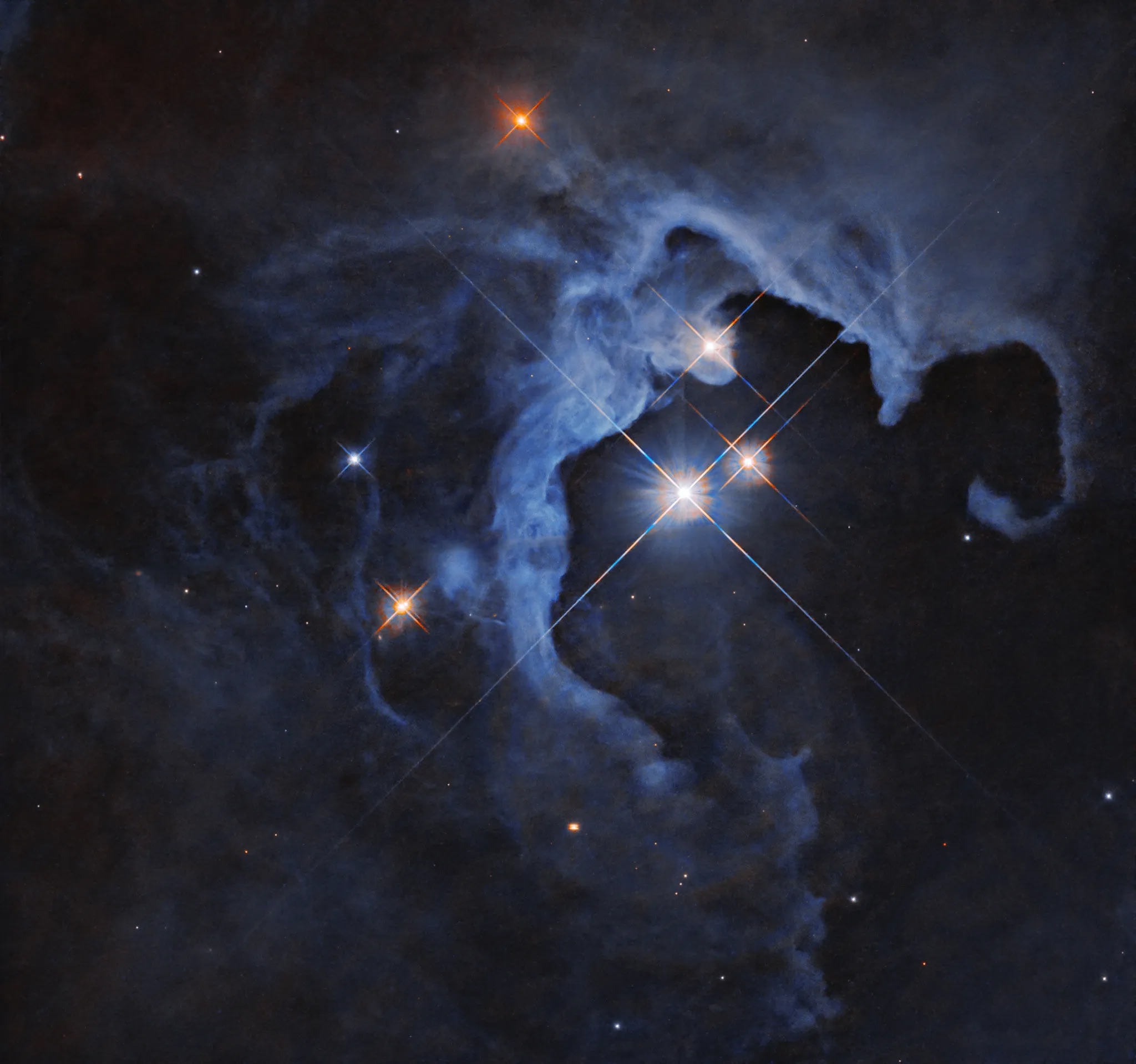At a distance of about 550 light-years from us, in the constellation Taurus, there is an amazing triple star system. It is also known by the catalog names EPIC 247592463, TIC 118521708 or IRAS 04328+2248. This system includes the HP Tauri variable star, as well as the HP Tau G2 and HP Tau G3.

HP Tauri is classified as a T-type star — a young variable star in which nuclear fusion has not yet begun, but it is on its way to becoming a hydrogen star similar to our Sun.
“T Tauri stars tend to be younger than 10 million years old — in comparison, our Sun is around 4.6 billion years old — and are often found still swaddled in the clouds of dust and gas from which they formed,” Hubble astronomers explained.
The brightness of HP Tauri fluctuates with time, which is a characteristic feature of variable stars. These fluctuations can be either periodic or random. Random variations are believed to be due to the chaotic nature of the young star’s development, including instability of its accretion disk, falling material from the disk onto the star, and surface flares. Periodic changes, on the other hand, may be associated with giant sunspots rotating and disappearing from view.
The stars are surrounded by a cloud of gas and dust, which glows with reflected light, forming a so-called reflection nebula. These nebulae do not emit visible light by themselves, but instead glow with the light of neighboring stars, similar to how fog is illuminated by car headlights.
The Hubble Space Telescope studied the HP Tauri system as part of a study of protoplanetary disks — matter around stars in which planets form over time over millions of years.
Earlier, we reported on how James Webb sent an impressively detailed photo of the Horsehead Nebula.
According to sci.news
Follow us on Twitter to get the most interesting space news in time
https://twitter.com/ust_magazine


